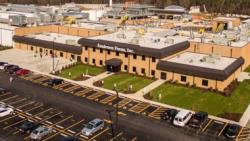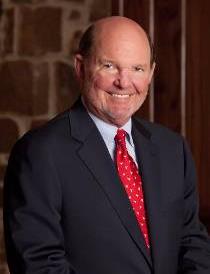 In a press release dated May 28th Sanderson Farms Inc. announced results for the 2nd quarter of FY 2020 ending April 30th.
In a press release dated May 28th Sanderson Farms Inc. announced results for the 2nd quarter of FY 2020 ending April 30th.
The following table summarizes the results for the period compared with the values for the corresponding quarter of the previous fiscal year (Values expressed as US$ x 1,000 except EPS)
|
2nd Quarter Ending April 30th.
|
2020
|
2019
|
Difference (%)
|
|
Sales:
|
$844,711
|
$845,229
|
+<0.1
|
|
Gross profit:
|
$12,428
|
$104,396
|
-88.1
|
|
Operating income:
|
$(43,786)
|
$55,166
|
-179.4
|
|
Pre-tax Income
Net Income
|
$(45,566)
$6,118*
|
$53,996
$40,636
|
-184.4
-84.9
|
|
Diluted earnings per share:
|
$0.28
|
$1.83
|
-84.7
|
|
Gross Margin (%)
|
1.5
|
12.4
|
-87.9
|
|
Operating Margin (%)
|
(5.2)
|
6.5
|
-180.0
|
|
Profit Margin (%)
|
0.7
|
4.8
|
-85.4
|
|
Long-term Debt:
|
$200,000
|
$55,000
|
|
|
12 Months Trailing:
|
|
|
|
|
Return on Assets (%)
|
1.5
|
|
|
|
Return on Equity (%)
|
2.4
|
|
|
|
Operating Margin (%)
|
1.2
|
|
|
|
Profit Margin (%)
|
0.9
|
|
|
|
Total Assets
|
$1,969,510
|
$1,774,134
|
+11.0
|
|
Market Capitalization
|
$2,971,000
|
|
|
*Takes into account CARES benefit, without which EPS would have been negative at a consensus estimate of $(1.29)
52-Week Range in Share Price: $ 102.30 to $179.45 50-day Moving average $134.30
Market open May 28th $140.80 Close $133.62
Forward P/E 126.6 Beta 0.7

In commenting on Q2 results, Joe F. Sanderson, Jr., chairman and CEO, stated “These are challenging and unprecedented times for all of us, I am especially proud of the dedicated work and perseverance of our 18,000 employees, contract poultry producers, customers, vendors, consumers who buy our products and the communities and states in which we operate”.
He noted “the financial results for our second quarter of fiscal 2020 reflect the impact of the extraordinary challenges caused by the COVID-19 pandemic. The unprecedented social and economic impact of the virus and the related government actions to contain its spread materially affected every aspect of our business, including our labor force, sales, operations and production levels, as well as our customers. Sanderson Farms entered this crisis with and continues to have a strong financial position, little debt and ample liquidity. The Company had $776.9 million of borrowing capacity available under its revolving credit facility at the end of the second fiscal quarter.
In commenting on the market situation Sanderson commented “volatility is reflected in the market prices for boneless breast meat produced at our plants that target food service customers. Quoted market prices for boneless breast meat began moving seasonally higher in late February, and reached $1.35 per pound during the fourth week of March. Less than one month later, the quoted market price was at an historic low of $0.74 per pound, with some realized prices below $0.50 per pound. However, prices began to move higher at the end of April, as certain parts of the country began to relax restrictions to mitigate the spread of the virus and moved to $1.58 per pound by mid-May. The current quoted market price for boneless breast meat is $1.31 per pound. Our average sales price per pound of fresh and frozen poultry decreased 8.3 percent during the second quarter of this fiscal year compared with the same period last year and was lower by 2.5 percent through the first half of this fiscal year compared to the first half of last year.
Referring to the Sanderson Farms product mix he stated “demand for our products shifted among our customer base during the quarter, as orders from food service customers declined dramatically due to widespread closures of restaurants and other venues where food is consumed away from home, while orders from our retail grocery store customers surged. We were able to shift production from our food service program into our retail program to some extent, but overall, we processed 4.2 percent fewer pounds during the second quarter than we expected when we announced our first quarter results on February 27th 2020. Moving into our third fiscal quarter, we have reduced egg sets relative to our expectations, and we now expect to produce 5.9 percent fewer pounds during our third fiscal quarter than we projected in February, as we shift production into our retail grocery store program and reduce production levels at our plants that process a larger bird for food service customers.” He added “we expect our total production during our third and fourth fiscal quarters of 2020 to be up 2.2 percent and down 5.0 percent, respectively, compared to the same quarters of fiscal 2019”.
The cost of responding to COVID-19 was described by Sanderson in his concluding statement, “among other measures taken to manage through the current environment, Sanderson Farms announced on March 31, 2020, that, effective immediately and continuing to June 26, 2020, all hourly employees who work their scheduled hours are eligible to earn an attendance bonus of $1.00 per hour. In addition, steps we have taken to protect the health, safety and welfare of our workforce and to address other challenges of this pandemic will increase our operating costs and negatively affect our volumes for the remainder of fiscal 2020
In the post-release call Sanderson indicated that food service demand was back to 75 percent of the pre-COVID-19 level. He commented on uncertainty regarding exports to China. Sanderson indicated that although repurposing plants from the current 58% “big-bird” to 42 percent tray-pack was feasible there was no plan to do so.